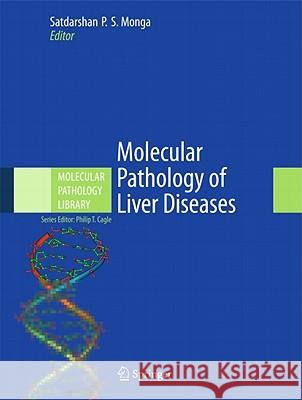Molecular Pathology of Liver Diseases » książka
Molecular Pathology of Liver Diseases
ISBN-13: 9781441971067 / Angielski / Twarda / 2010 / 931 str.
Molecular Pathology of Liver Diseases
ISBN-13: 9781441971067 / Angielski / Twarda / 2010 / 931 str.
(netto: 1028,12 VAT: 5%)
Najniższa cena z 30 dni: 1072,03 zł
ok. 20 dni roboczych.
Darmowa dostawa!
Molecular Pathology of Liver Diseases is an important component of the Molecular Pathology Library Series by Springer. In this day and age, molecular mechanism of a disease is an integral part of the thought process of the practicing health care provider. Unlike basic scientists who are trained to understand the intricacies of molecular signaling and their interactions in health and disease, many in the clinical arena might feel a void in their knowledge of these complex mechanisms. Also, with increasing translational applications of the molecular biology, especially in the discipline of molecular pathology, it is of greater significance to generate resources capable of: (i) providing fundamental concepts of organ-based molecular pathology for the trainees; (ii) providing continued education to the trained (how about practicing pathologist) keeping them abreast of the timely modalities and shifting paradigms and; (iii) providing cross-discipline opportunities fostering molecular biology as a discipline. Molecular Pathology of Liver Diseases is an attempt to serve these functions in an ever-evolving field of Liver Pathobiology. Cellular and Molecular Pathology of the Liver is extensive, complex and ranges from the understanding the basic molecular mechanisms that dictate everything from liver homeostasis to liver disease. Molecular Pathology of the liver is complicated due to some of the important functions inherent and unique to the Liver, including its innate ability to regenerate and the multitude of functions it plays for the wellbeing of an organism. With all this in mind, Molecular Pathology of Liver Diseases is organized in different sections, which will coherently and cohesively present the molecular basis of hepatic physiology and pathology. The first two sections are key to understanding the liver anatomy and physiology at a cellular level and go on to define the molecular mechanics in various liver cell types. These sections also cover the existing paradigms in liver development, regeneration and growth. The next section is key to understanding the Molecular Pathology unique to liver diseases and associated phenotypes. The final sections are geared towards the existing knowledge of the molecular basis of many common and uncommon liver diseases in both neoplastic and non-neoplastic areas including pathologies associated with intra-hepatic and extra-hepatic biliary tree. Thus, this textbook is a one-stop reference for comprehending the molecular mechanisms of hepatic pathobiology. It is clearly unique in its format, readability and information and thus will be an asset to many in the field of Pathology and other disciplines.











